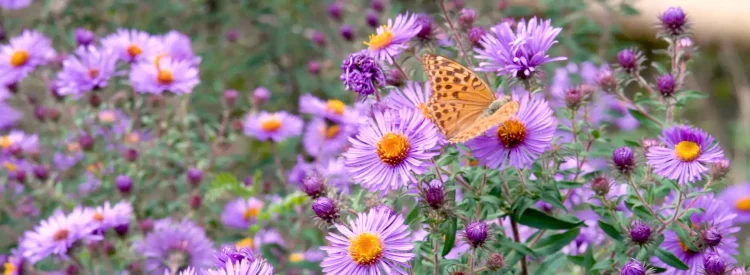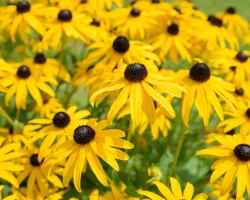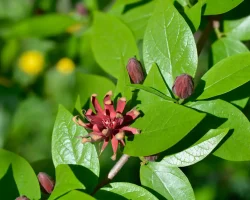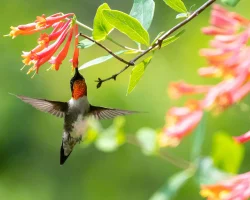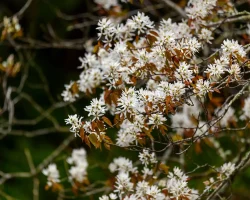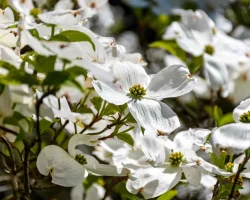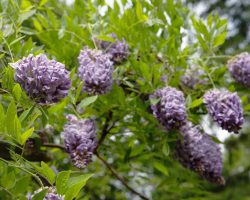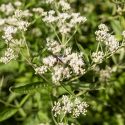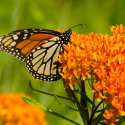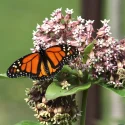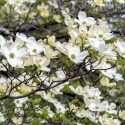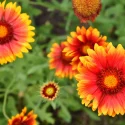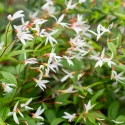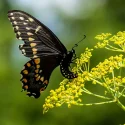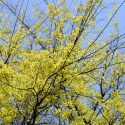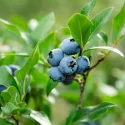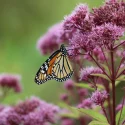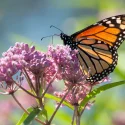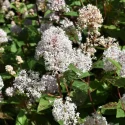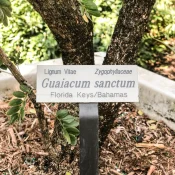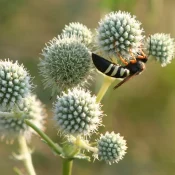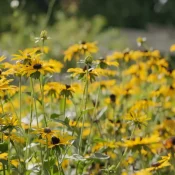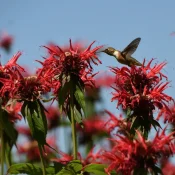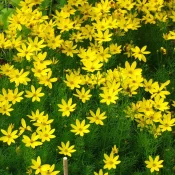Just when it seems like the garden is winding down, these native beauties burst into bloom. There are 100+ asters native to North America, in colors from white to blue to purple. Asters are essential for pollinators, offering vital late summer and fall nectar. Beginner-friendly, they thrive in various sunlight conditions—some even enjoy the shade. Every garden deserves at least three species of asters. Scroll below to find your favorites.
A single aster can have HUNDREDS of flowers
Let’s explore why asters are so special, including tips on planting and the best varieties to enhance your garden.
Are native asters a good choice for my yard?
Yes, if…
- You want late-season color when most flowers are fading.
- You want to feed migrating Monarchs and other pollinators.
- You’d like a perennial that comes back year after year.
- You’re looking for easy-care, no-fuss plants (rainfall alone usually suffices after the first year).
- You have shade, part shade, or full sun—there’s an aster for every condition.
New to native?
Before lawns and landscaping, native plants were here. They’ve fed birds, bees, and butterflies for thousands of years—and they’ll do the same in your yard. The best part? They’re easier to grow than you think.
Why native asters matter
- Late-season lifeline: Food for bees, butterflies, and Monarchs heading to Mexico.
- Time-savers: Once established, they need little maintenance or water.
And one more benefit to planting native asters 🦋
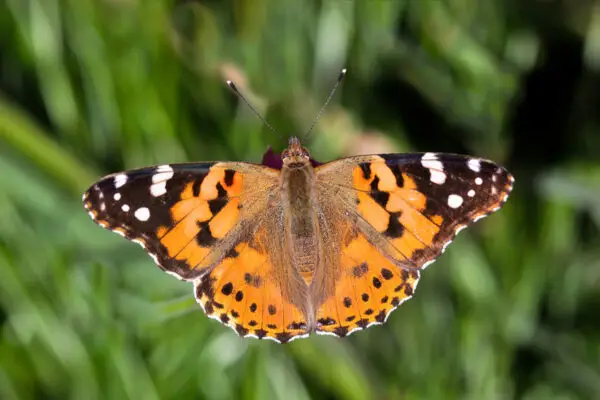
Native asters are the host plants for many butterflies
New England and New York Asters are host plants to Pearly Crescentspot, Crescentspot, and Silvery Crescentspot butterflies. Simply put, without their native host plants, these butterflies would not exist!
What is a host plant?
A host plant is a specific plant that a bug, butterfly, or caterpillar eats, lives on, or lays its eggs on.
To help keep your asters covered in butterflies and pollinators, we have a tip:
No pesticides or herbicides
Avoid using pesticides or herbicides near aster plants, as they can harm the butterflies and pollinators that visit the flowers. Keeping our gardens free of pesticides and herbicides helps invite pollinators and birds into our spaces.
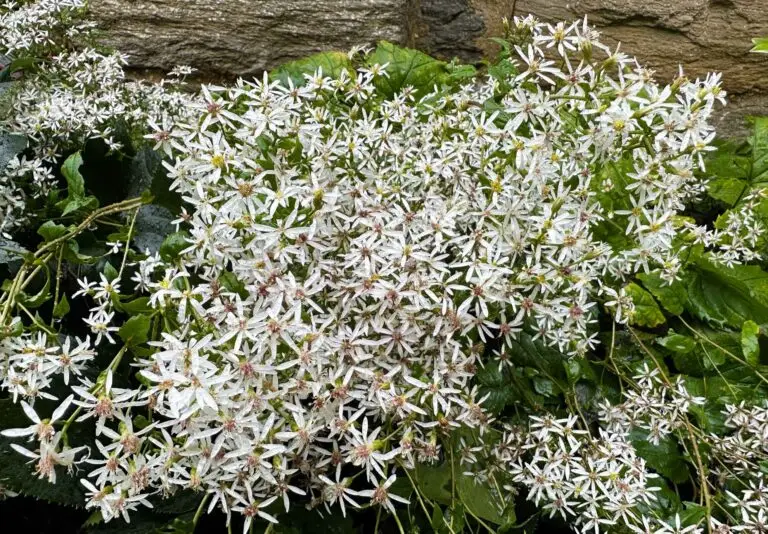
Meet some North American native asters
Here are six native aster species commonly found at local native plant nurseries:
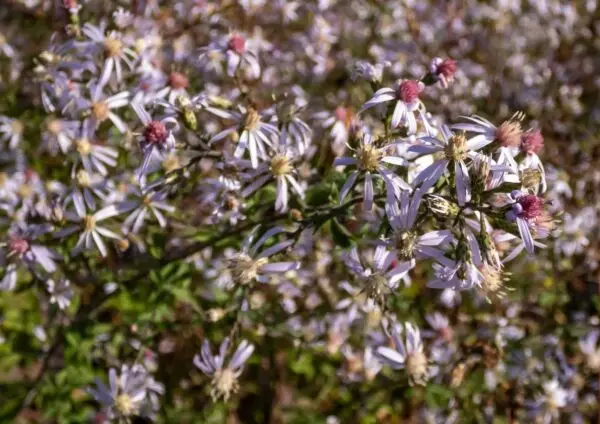
Blue Wood Aster
Symphyotrichum cordifolium
- Heart-shaped leaves, pale bluish-purple flowers
- Grows in sun to shade
If you like heart-shaped leaves, pair with a Redbud!
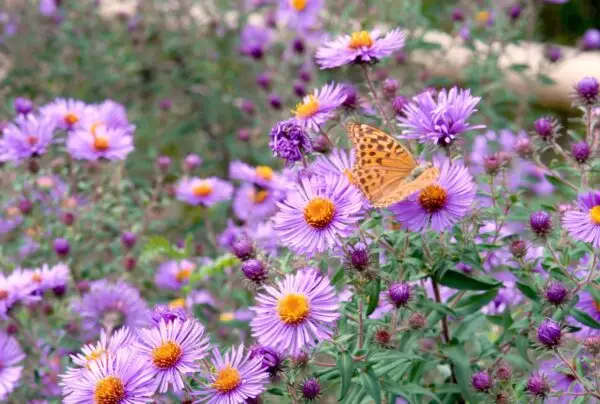
New England Aster
Symphyotrichum novae-angliae
- Monarch magnet
- Covered in purple blooms late summer–fall
- Tall (up to 5’)
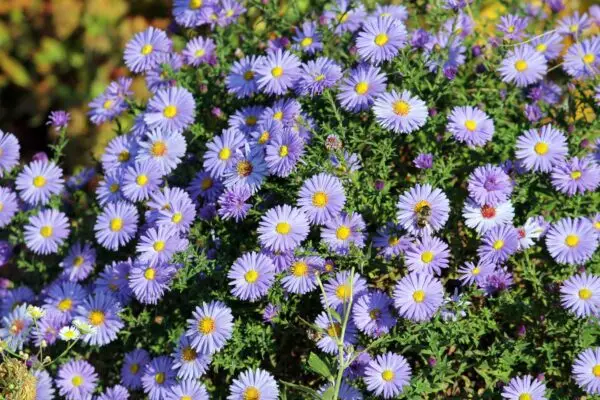
New York Aster
Symphyotrichum Novae-belgii
- Loads of purple-blue flowers
- Prefers moist to wet soil (good for rain gardens)
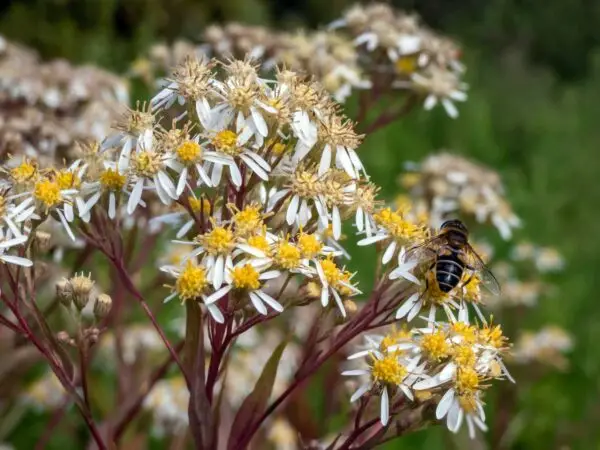
Parasol Aster
Symphyotrichum umbellatus
- Clusters of blooms atop tall stems
- Adaptable to sun or part shade—great for beginner gardeners
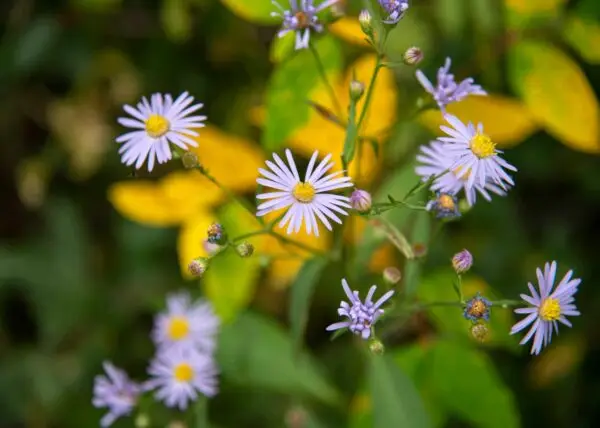
Smooth American Aster
Symphyotrichum laeve
- Belongs in every pollinator garden!
- Full sun to part sun
Uli Lorimer, director of the Native Plant Trust, introduces this plant beautifully: “this aster [Smooth American Aster] belongs in every pollinator garden, butterfly garden, or meadow planting. I have seen the flowers covered in monarch butterflies, skippers, and clouded sulfurs, to name just a few.” (from Northeast Native Plant Primer.)
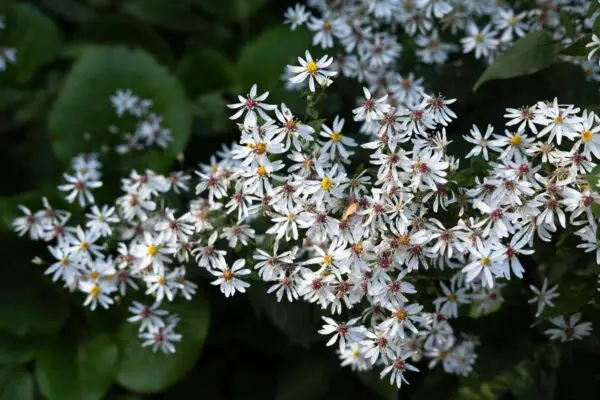
White Wood Aster
Eurybia divaricata
- An aster for shade!
- They are not woody—their name comes from their native habitat in woodland forests
What about the other ~100 asters?
Explore more asters by tapping below.
More native aster species
North American native species of aster include:
| Common Name | Latin Name | Native Region | Flower Color |
|---|---|---|---|
| Northeastern United States | |||
| New England Aster | Symphyotrichum novae-angliae | Northeastern U.S. | Purple to Pink |
| White Wood Aster | Eurybia divaricata | Appalachian Mountains | White |
| Blue Wood Aster | Symphyotrichum cordifolium | Northeastern U.S. | Light Blue to Violet |
| Southeastern United States | |||
| Georgia Aster | Symphyotrichum georgianum | Georgia, Alabama, Florida | Deep Purple |
| Midwestern United States | |||
| Smooth Blue Aster | Symphyotrichum laeve | Midwestern U.S. | Blue to Purple |
| Skyblue Aster | Symphyotrichum oolentangiense | Midwestern U.S. | Sky Blue |
| Aromatic Aster | Symphyotrichum oblongifolium | Midwestern, Mid-Atlantic, and parts of Northeastern U.S. | Blue to Purple |
| Western United States | |||
| Pacific Aster | Symphyotrichum chilense | Western U.S. | Lavender |
| Western Aster | Symphyotrichum ascendens | Western U.S. | Violet to Nearly White |
| Arctic Aster | Eurybia sibirica | Alaska, Northwestern Canada | Purple |
| Southwestern United States | |||
| Bigelow’s Aster | Machaeranthera bigelovii | Southwestern U.S. | Purple |
Now that we’ve met a pile of native aster species let’s answer a few FAQs about them.
FAQs
Should I cut native asters?
You can cut native asters in mid-summer (around July 4th) to make them smaller and more compact.
Don’t worry about the severe haircut. The plant will then spend time making flowers instead of stems, keeping the size much more manageable.
What are the best asters for wet areas?
New York Aster thrives in wetter gardens. Explore our Best Native Plants for Rain Gardens if you’re planning for a water-logged area.
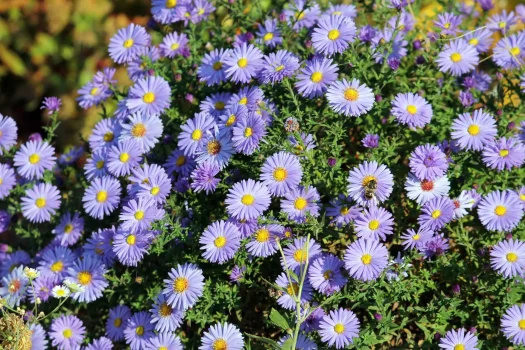
What are the best asters for shade?
White Wood Aster is great for shade.
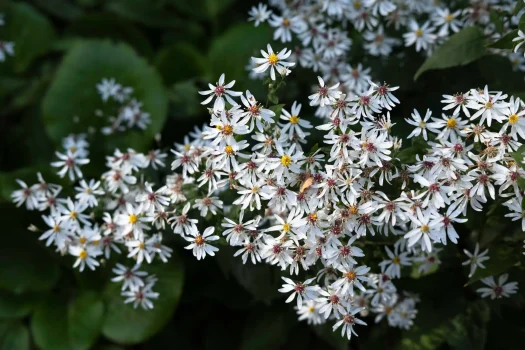
What is the difference between asters, daisies, and mums?
As you look at pictures of asters, you might be thinking, “Hmm…asters are tiny daisies, right?” Or perhaps their piles of flowers and fall blooms remind you of chrysanthemums (sometimes called ‘mums’)?
However, only asters have species native to North America.
Here is a beginner-friendly overview of their differences:
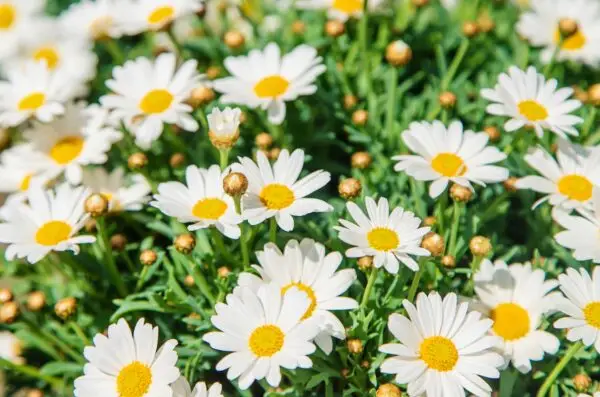
Daisies
Normally when we think of daisies, we’re thinking of the Shasta Daisy or Oxeye Daisy, which has a yellow center and white flowers. These daisy species are native to Asia and Europe.
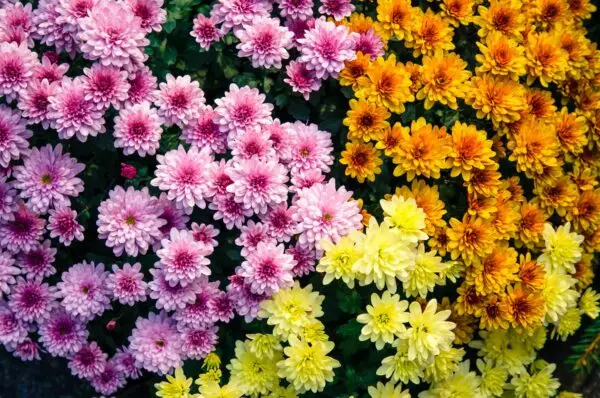
‘Mums’
‘Mum’ is short for Chrysanthemum; these flowers are native to Asia and Europe. In the fall, you’ll often see bright tubs of mums outside grocery stores and plant nurseries.
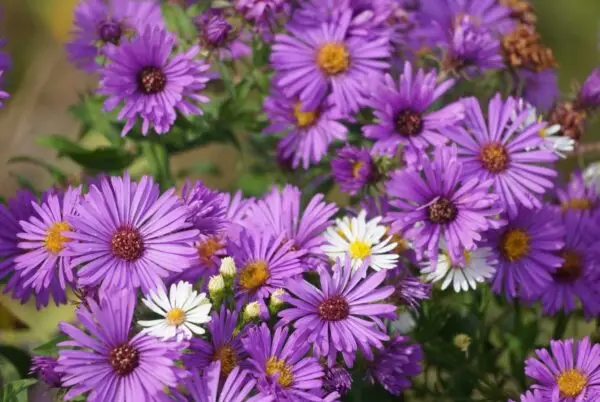
Asters
Asters have delicate daisy-like flowers in the fall. There are 120 varieties of Asters native to North America. Scroll above to find different types, colors, and shade-loving species.
Where native asters shine in your yard
Asters are the plants that keep your garden glowing just as everything else starts to fade. They thrive in sunny spots, part-shade borders, and even woodland edges, depending on the species, which makes them incredibly versatile for suburban yards.
Plant tall species like New England Aster toward the back of a bed, where they can tower over shorter companions, and tuck shade-loving White Wood Aster under trees or along fences. Because they bloom in late summer and fall, asters pair beautifully with goldenrods, grasses, and coneflowers, turning your yard into a pollinator buffet when nectar is scarce. For the biggest impact, plant them in groups of three or more—a drift of purple and blue blooms will stop you (and every butterfly in the neighborhood) in your tracks.

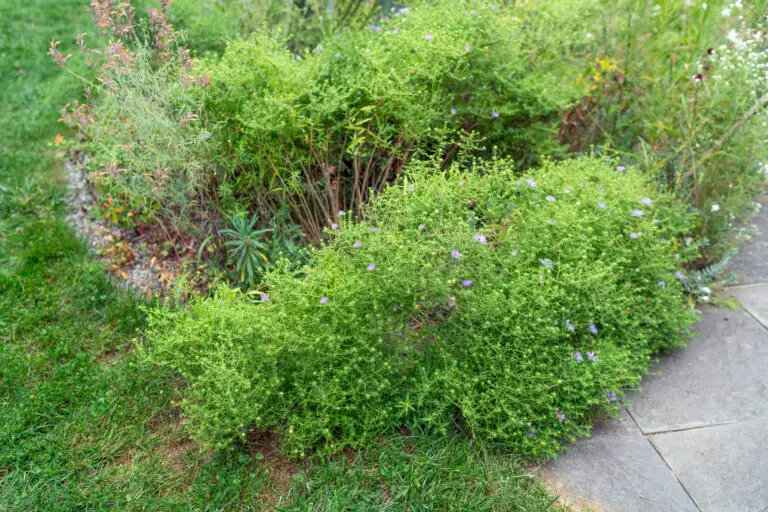
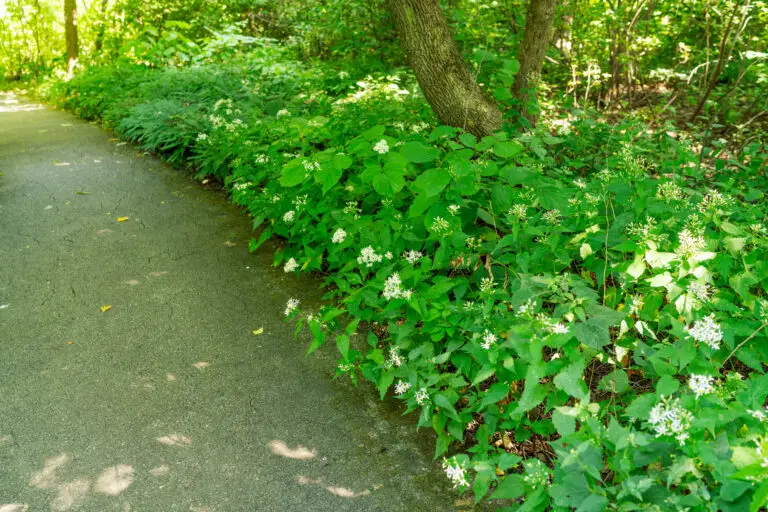
Where did the name aster come from?
Aster comes from the Greek word for star.
Aster is a translation of the ancient Greek word ‘ἄστρον’ (astron), used for “a celestial body (typically stars and planets).”
It’s a wonderful tribute to their star-like flowers and a beautiful reminder that the small things in our gardens can remind us of unfathomably large things—like the universe itself.
Where can I find native asters?
Finding native plants can sometimes be challenging. Big box stores and even some independent nurseries do not carry many native plants. But there are many places to find native asters, if you know where to look!
Here are four reliable resources for finding native asters. (Our extensive list of over 100 native plant nurseries is especially useful!)
Where can I find seeds and plants?
Finding native plants can be challenging (we partly blame Marie Antoinette.) To make it easier, we’ve assembled four sourcing ideas.
300+ native nurseries make finding one a breeze
Explore 100+ native-friendly eCommerce sites
Every state and province has a native plant society; find yours
Online Communities
Local Facebook groups are a great plant source
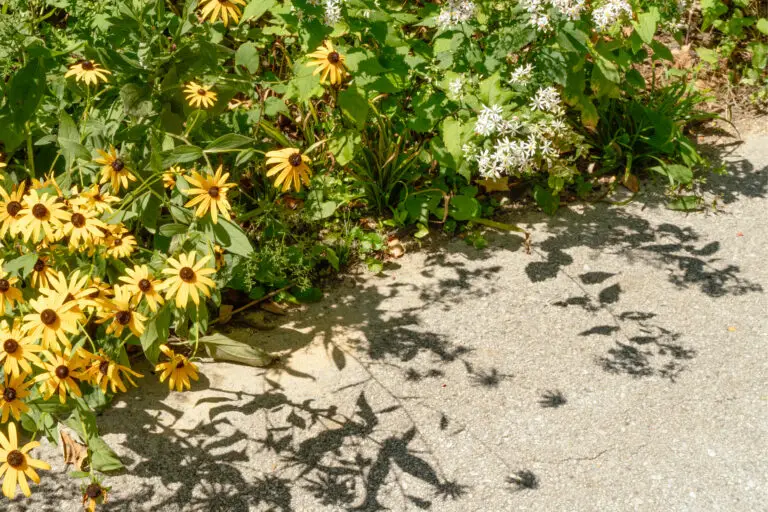
What pairs well with native asters?
Asters look great alongside other plants that flower at different times, so pollinators always have something to eat. Pair with springtime bloomers like native dogwoods, serviceberries, and sweetshrubs, alongside a summer-flowing vine like coral honeysuckle or American wisteria.
For a stellar fall garden, plant asters alongside other fall-blooming flowers with yellows, oranges, and reds. Stephanie Cohen from the Brooklyn Botanic Garden says: “[Asters] primarily blue-violet flower tones work in cool, subtle contrast to the fiery fall landscape at large.” Some ideas include:
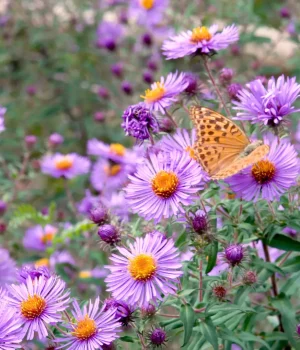
Pairs well with
To sum it up: native asters are necessary and gorgeous additions to any Northeast, Mid-Atlantic, Midwest, or Southern garden. They offer pollinators food at the end of the summer and help give gardens a pop of color as we head into fall. Native asters are exceptionally easy to plant and come back year after year. Plant a few today to give pollinators something to snack on alongside something bright in the fall. Plant them with native goldenrods, black-eyed susans, milkweeds, and some native penstemons to keep the pollinators happy and fed. Visit our Best Native Plants for Front Yards or our Best Native Host Plants for more inspiration. Happy planting!
Sources
- Harris, Marjorie. Botanica North America: The Illustrated Guide to Our Native Plants, Their Botany, History, and the Way They Have Shaped Our World. (2003), 82-84.
- Johnson, Lorraine. 100 Easy-to-Grow Native Plants for American Gardens in Temperate Zones. (1999), 76, 122.
- Lorimer, Uli. The Northeast Native Plant Primer. (2022), 178-179.
- Brooklyn Botanic Garden, Asters.
- Chicago Botanic Garden, Native Asters Shine in the Garden
- Minnesota State Horticultural Society, Native Aster Species for Northern Gardens
- Piedmont Master Gardeners, Color and Life in the Fall Garden
- Missouri Department of Conservation. “New World Asters (American Asters),” n.d. https://mdc.mo.gov/discover-nature/field-guide/new-world-asters-american-asters.
- Latin Language Stack Exchange. “The Difference Between Ᾰ̓́Στρον (Ástron) and Ἀστήρ (Astḗr) in Ancient Greek.”
What if your feed was actually good for your mental health?
Give your algorithm a breath of fresh air and follow us.
